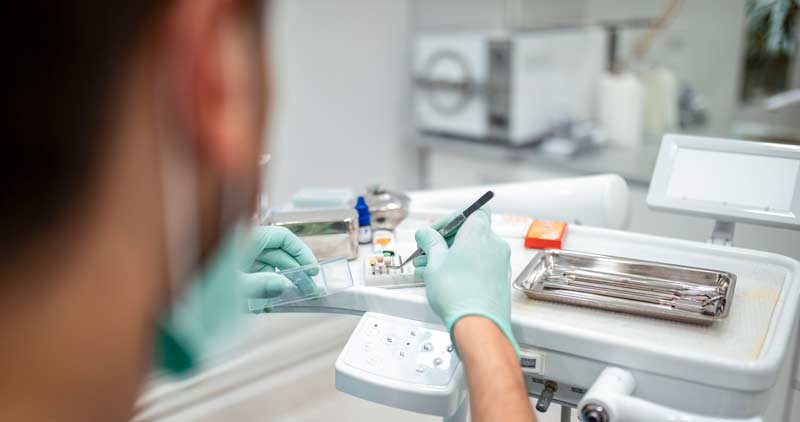New Study Finds that Integrating Medical Care into Dental Offices Helps Seniors Access Needed Care
Stories - May 7, 2021

By Neon Brooks, Senior Scientific Editor
 David Mosen, PhD, MPH
David Mosen, PhD, MPH
Receiving preventive medical care and clinical disease management has been linked to better health and longer life. But many people are not up to date on their vaccinations and cancer screenings, or do not regularly receive the tests and care they need to best manage chronic conditions like diabetes and hypertension. Recent learning health system research by Investigators at the Kaiser Permanente Center for Health Research (CHR) and partners in the Kaiser Permanente Northwest Dental system has shown that integrating medical care into dental offices is an effective way to help older patients receive this kind of medical care.
Kaiser Permanente Northwest is one of the only health systems in the country to offer medical and dental care and insurance, with both programs contributing to a common electronic health record. In partnership with CHR researchers, four dental clinics have recently adopted “medical-dental integration” models to help address care gaps, which are classified as preventive and disease-related medical services for which the patient is overdue. These programs vary in the level of integration: in one dental clinic, Salmon Creek, which shares a building with a medical clinic, a dental staff member identifies care gaps at the visit and coordinates with medical departments to help the patient complete the needed care. At another dental clinic, Glisan, a nurse is embedded within the stand-alone clinic to provide basic preventive services and coordinate referrals for offsite care. Finally, two dental clinics, Beaverton and Cedar Hills, are co-located with medical offices and have embedded nurses.
In the study, led by CHR Investigator David Mosen, Ph.D., MPH, researchers identified 2,758 patients who were age 65 and older who had at least one of 23 possible care gaps and had a recent dental visit to one of the four integrated dental clinics. The proportion of patients who successfully closed all care gaps within 30-60 days (depending on the care gap) was compared between these patients and a sample of 2,578 patients who received care at dental offices without medical-dental integration; patients in these two groups were matched in terms of the number and types of care gaps they had, as well as on demographic and health characteristics.
Overall, the researchers found that patients treated at medically integrated dental clinics were about 1.5 times as likely to close all their medical care gaps following the dental appointment than matched control patients. “Our findings suggest that integrating medical and dental care may be an effective, relatively low-cost way to improve health outcomes for this population,” said Dr. Mosen.
While all three integration models led to significant improvements in care gap closure compared to non-integrated clinics, the size of the benefit increased as the level of integration increased: those at the co-located clinic with no nurse on site were 1.2 times as likely to close all care gaps, while those at the co-located clinic with a nurse were 1.7 times as likely to do so. The fact that even a relatively low level of integration led to significant improvement in patients receiving care suggests that partnerships between medical and dental offices do not have to be intensive to have an impact on patient care.
The findings from this study suggests that integrating medical care into the dental setting can be a powerful way to help older adults address their preventive care needs and monitor chronic conditions. KPNW plans to continue to expand its medical-dental integration: the Tanasborne clinic added medical integration in early 2021.